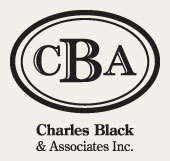WORKSHOP
Tungsten Inert Gas (TIG) Welding
Instructor Name |
Bill McCue |
Course Description |
TIG Welding and Safety In this class the students will be introduced to TIG welding and safety procedures. This class will include learning to strike an arc and run beads in flat vertical and overhead positions. They will also learn how to safely set up the tig torch and the proper procedures for grinding their tungsten. They will learn the proper polarity and current settings to weld metal in each position using various joints they have prepared themselves. They will learn the importance of good penetration of the weld joint, how to properly manipulate the weld pool. They will also learn how to properly position themselves and the weld material. Assessment methods: The instructor will visually inspect welders during the training course and will work with each student individually during each welding session to help them improve their welding techniques. Demonstration of proper techniques will be given to each student. |
Course Length |
Day One - Introduction of instructor. Safety presentation, knowledge of welding, effects of current, filler rod types, and arc length. Basic welding in flat metal using 3/32” 316L filler rods. Students will learn to properly set up tig torch and will cut all of their practice specimens themselves. After instructor approval students will learn how to set up a “open root” joint and practice the joint in the flat position. Day Two - Discussion of filler rod manipulation, positioning of the welder and plate. Finalizing of 316 L in flat and vertical position. Day Three - Discussion of material covered and any problems or questions from students. Begin welding with 3/32” 316L rods in the flat and vertical position. Day Four - Students will take an open root welding test in plate or pipe. |
Materials, Resources |
Company will provide:
|
Maximum class size |
8 students (If 10 welding stations are available, we can accommodate 10 students.) |
